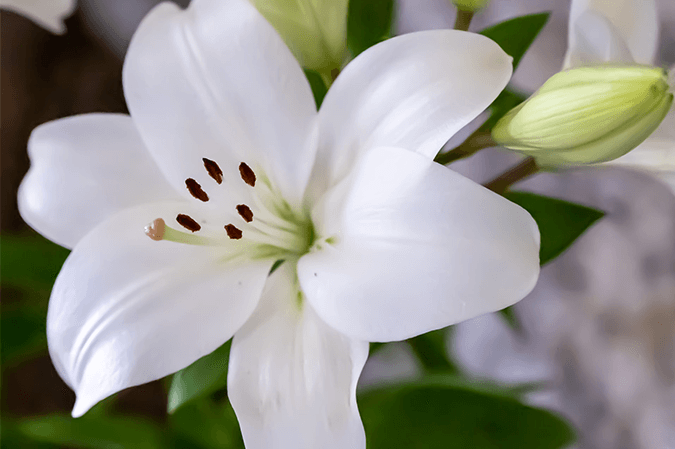Description
Plantain lilies, commonly known as hostas, are herbaceous perennials in the family Asparagaceae, native to Northeast Asia, including Japan, Korea, and China. The genus Hosta includes over 40 species, with thousands of cultivars available in a variety of sizes, shapes, and colors. Hostas are primarily grown for their attractive foliage, which ranges from deep green to blue-green, yellow, and variegated patterns. They are widely used in shade gardens and are known for their ability to thrive in low-light conditions.
Common Features
- Leaves: The leaves of hostas are their most distinguishing feature. They are large, broad, and often heart-shaped or lanceolate. The texture of the leaves can vary from smooth to heavily ribbed or corrugated. Leaf color varies widely, including solid green, blue-green, yellow, and variegated combinations of green, white, and cream. The leaves grow in dense rosettes from a central crown.
- Flowers: Hostas produce tall, slender flower stalks (scapes) that rise above the foliage. The flowers are typically tubular or bell-shaped and come in shades of lavender, pale blue, or white. Though hosta flowers are attractive, they are generally secondary to the plant’s foliage in ornamental value.
- Growth Habit: Hostas grow in clumps and spread slowly via rhizomes. Depending on the variety, they can range in size from small, compact plants suitable for containers to large, spreading ground covers. Some varieties reach heights of over 2 feet with a spread of up to 4 feet or more.
- Fragrance: While most hosta flowers are not fragrant, some species and cultivars, such as Hosta plantaginea, are known for their fragrant white flowers that bloom in late summer.
Role in the Ecosystem
- Shade Gardening: Hostas play a crucial role in shade gardens, where they thrive under trees and in other low-light areas. Their dense foliage helps to suppress weeds, making them an effective ground cover in shaded environments.
- Pollination: Hostas attract a variety of pollinators, including bees and hummingbirds, with their tubular flowers. Though not primarily grown for their flowers, the blooms provide a valuable nectar source for these pollinators, particularly in the summer months.
- Soil Improvement: The extensive root systems of hostas help improve soil structure by increasing aeration and promoting the development of a healthy soil ecosystem. As they grow, hostas contribute organic matter to the soil, enriching it over time.
Importance
- Ornamental Value: Hostas are among the most popular perennials in ornamental gardening, particularly in temperate climates. Their versatility in size, shape, and color makes them a favorite choice for adding texture and visual interest to shade gardens, borders, and woodland landscapes. Hostas are often used as ground covers, in mixed perennial beds, and as accent plants in shaded areas.
- Cultural Significance: In Japan, hostas have been cultivated for centuries and are known as “urui.” They hold cultural significance, particularly in traditional gardens, where they are valued for their beauty and resilience.
- Culinary Uses: In Japan and some other East Asian cultures, young hosta shoots and leaves are sometimes harvested as a seasonal vegetable. They are blanched and eaten as a delicacy, though this practice is not common outside of their native range.
- Low-Maintenance Landscaping: Hostas are highly valued in landscaping for their low maintenance requirements. They are hardy, long-lived plants that can thrive in a wide range of conditions, particularly in shaded and moist environments. This makes them an ideal choice for gardeners looking for reliable and easy-to-care-for plants.
- Pest and Wildlife Interaction: While hostas are relatively pest-resistant, they can be susceptible to damage from slugs, snails, and deer, particularly in gardens where these pests are prevalent. However, they are generally resistant to most diseases and are known for their resilience and adaptability in various environments.
Sources
- Royal Horticultural Society. (n.d.). Hosta (Plantain Lily) – Plant Finder. Retrieved from RHS
- Encyclopedia Britannica. (n.d.). Hosta | Plant, Description, & Facts. Retrieved from Encyclopedia Britannica
- Missouri Botanical Garden. (n.d.). Hosta – Overview, Growing Tips, and Care. Retrieved from MBG



